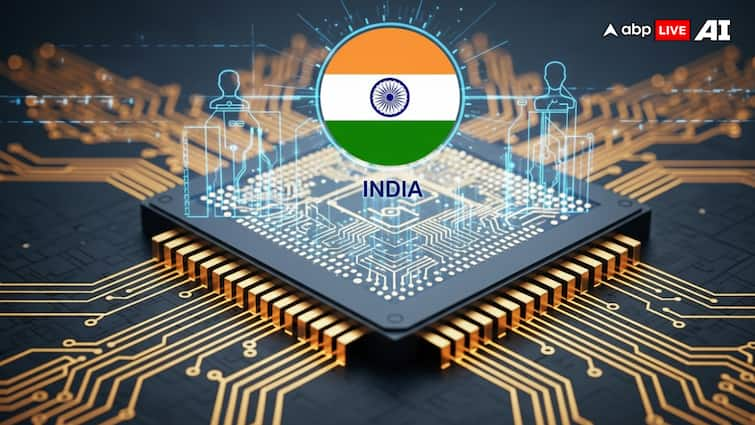Prime Minister Narendra Modi’s address at the Semicon India 2025 conference marked a defining moment in India’s journey to becoming a global semiconductor powerhouse. With 10 projects worth over USD 18 billion (₹1.5 lakh crore) currently underway, India is entering a decisive new phase in its India Semiconductor Mission (ISM), and Assam has a big role to play. Modi’s vision is clear: to transform India from a marginal player into a leader in the world’s most strategic technology sector.
Comparing semiconductors to oil, he said, “Oil was black gold, but chips are digital diamonds. Oil shaped the previous century, but the power of the 21st century lies in the chip.” This analogy captures the stakes perfectly. Just as oil-powered industrialisation and geopolitics in the 20th century, semiconductors now drive the digital economy, powering everything from smartphones and electric vehicles to AI and defence systems.
India’s Big Leap In A Trillion-Dollar Market
The global semiconductor industry, already valued at USD 600 billion, is expected to cross USD 1 trillion in the coming years. Until recently, India’s role in this domain was limited to backend services and chip design outsourcing. However, since the launch of the Semicon India programme in 2021, India has moved rapidly to establish its own chip manufacturing ecosystem.
By 2023, the first domestic chip plant had been approved. In 2024, several more projects followed, and in 2025, five additional plants received the green light.
Modi highlighted that 10 semiconductor projects are now active, a clear sign that global industry leaders see India as a reliable and competitive hub. This is no small achievement given that semiconductor manufacturing is one of the most complex and capital-intensive industries in the world.
The government is creating plug-and-play semiconductor parks across the country, ensuring ready access to land, power, water, and high-speed connectivity. These parks will be backed by Production-Linked Incentives (PLI) and Design-Linked Incentives (DLI), providing financial support to companies investing in design, research, and manufacturing.
Importantly, Modi announced a revamp of the DLI scheme to ensure it better serves its purpose, attracting top global talent and companies while boosting indigenous innovation. This is crucial as India aims not just to assemble chips but to design and manufacture cutting-edge products.
Assam Emerges As New Tech Hub
One of the most striking moments of the conference was the spotlight on Assam, which has now taken a place on India’s semiconductor map. Two chips developed in the state, the Tata OSAT Chip and the Neural Amplifier Frontend IC designed by NIT Silchar, were proudly showcased at the event.
Assam Chief Minister Himanta Biswa Sarma celebrated the achievement, posting on social media: “The first Made in India chips displayed at #SemiconIndia2025 and proudly taking their place are two chips from Assam, the Tata OSAT Chip and the Neural Amplifier Frontend IC from NIT Silchar! Assam is moving steadily to ensure that it fuels India’s semiconductor journey.”
The first Made in India Chips displayed at the #SemiconIndia2025 and proudly taking its place are two chips from Assam- the Tata OSAT Chip and the Neural Amplifier Frontend IC from NIT Silchar!
Assam is moving steadily to ensure that it fuels India’s semiconductor journey 🔥 pic.twitter.com/jy2iFXGd2S
— Himanta Biswa Sarma (@himantabiswa) September 2, 2025
This development is more than symbolic. It represents a decentralisation of India’s tech growth, showing that states beyond the traditional tech hubs of Bengaluru, Hyderabad, or Pune can play a key role in the nation’s digital future.
By promoting semiconductor innovation in the Northeast, the Modi government is also reinforcing its larger vision of balanced regional development and integration. Assam’s participation in this high-tech sector could generate jobs, spur research, and establish the region as a crucial player in the global electronics supply chain.
Overcoming The Late Start
India’s semiconductor journey undeniably began later than that of global leaders like Taiwan, South Korea, and the United States. Yet, Modi’s message was one of optimism and determination. “Our journey began late, but nothing can stop it now,” he declared.
This confidence stems from India’s strengths: a large and skilled talent pool, a fast-growing electronics market, and a government willing to offer robust policy support. With test chips from Micron Technology and Tata Electronics already in production and commercial manufacturing expected to begin this year, India is moving swiftly from theory to practice.
The road ahead will not be without challenges. Semiconductor manufacturing requires advanced technology, massive capital investment, and flawless execution. Global competition is fierce, and supply chains remain vulnerable to geopolitical shocks. But India’s strategy of combining state-backed incentives, private sector innovation, and international partnerships provides a strong foundation.
Defining Moment For Digital India
At its core, India’s semiconductor push is about more than just technology. It’s about economic sovereignty, national security, and strategic positioning in a world increasingly defined by digital power.
By committing to become a “full-stack semiconductor nation,” India is taking control of the building blocks of its digital future. If successful, this revolution will not only create high-value jobs and attract billions in investment but also ensure that the chips powering India’s growth are truly made in India.
(The writer is a technocrat, political analyst, and author)
[Disclaimer: The opinions, beliefs, and views expressed by the various authors and forum participants on this website are personal and do not reflect the opinions, beliefs, and views of ABP Network Pvt. Ltd.]



